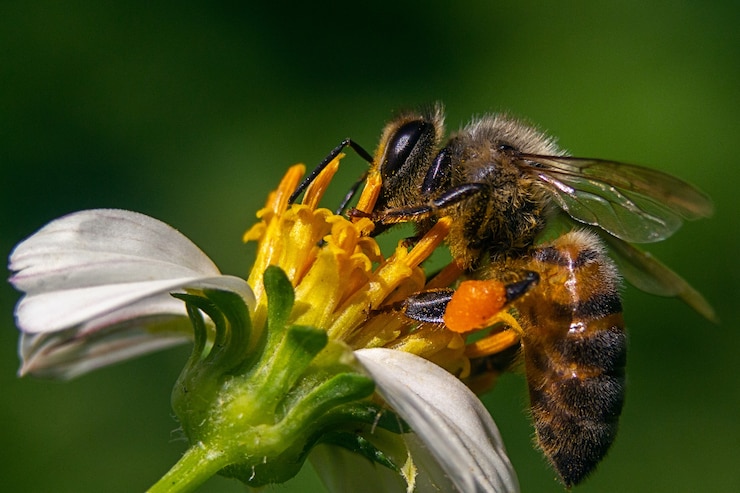Beekeeping, or apiculture, plays a crucial role in South Africa’s agriculture and ecosystem health. However, beekeepers need to be aware of the potential infections and diseases that can affect their bee colonies. Being able to recognize and manage these issues is vital for maintaining the health and productivity of bee colonies. In this article, we will discuss some common infections and diseases that beekeepers in South Africa should be mindful of, along with preventive measures and management strategies.
- American Foulbrood (AFB): American Foulbrood is a highly contagious bacterial disease caused by the spore-forming bacterium, Paenibacillus larvae. It primarily affects bee larvae, leading to their death. Infected larvae appear dark and greasy, eventually disintegrating within the cell. Proper hive hygiene, regular inspections, and the destruction of infected hives are essential for preventing the spread of AFB.
- European Foulbrood (EFB): European Foulbrood is another bacterial disease caused by the bacterium Melissococcus plutonius. Similar to AFB, EFB affects bee larvae and pupae, resulting in their death. However, the infected larvae appear twisted and rubbery instead of greasy. Maintaining strong and healthy colonies, good nutrition, and practicing hygienic beekeeping techniques can help prevent and manage EFB.
- Varroa Mites: Varroa mites (Varroa destructor) are external parasites that infest honeybee colonies, weakening the bees and transmitting viruses. These mites attach themselves to adult bees and brood, causing deformities, weakened immune systems, and decreased colony productivity. Regular monitoring, implementing integrated pest management strategies, and using appropriate treatments are crucial for controlling Varroa mite infestations.
- Nosema: Nosema is a fungal infection caused by the microsporidian parasites Nosema apis and Nosema ceranae. It affects the midgut of adult bees, leading to reduced lifespan and colony productivity. Infected bees may exhibit dysentery, weakened states, and decreased foraging activity. Good hive hygiene, providing a balanced diet, and reducing stressors can help prevent and manage Nosema infections.
- Chalkbrood: Chalkbrood is a fungal infection caused by the fungus Ascosphaera apis. It primarily affects bee larvae, transforming them into chalk-like mummies. Infected larvae are hard and white in texture. Maintaining proper ventilation in hives, controlling moisture levels, and practicing good hygiene can aid in preventing and managing chalkbrood.
- Sacbrood Virus: Sacbrood Virus is a viral disease that affects bee larvae, resulting in their death. Infected larvae appear swollen and sac-like, with their bodies changing from pearly white to yellow or brown. Maintaining strong colonies, practicing hygienic beekeeping techniques, and requeening when necessary are important strategies for managing sacbrood virus outbreaks.
- Deformed Wing Virus (DWV): Deformed Wing Virus is a viral infection often transmitted by Varroa mites. It affects the development of bee wings, resulting in deformed wings and reduced flight capabilities. Regular monitoring of mite levels, effective mite control measures, and maintaining strong colonies can help prevent and manage DWV infections.
- Africanized Honey Bees (AHBs): While not a disease or infection, Africanized Honey Bees, also known as “killer bees,” present a challenge for beekeepers. These bees are a hybrid of European and African honey bee subspecies and are known for their defensive behavior. Beekeepers should be cautious and adopt appropriate safety protocols when dealing with Africanized Honey Bees.
Beekeepers in South Africa should be vigilant in monitoring their bee colonies for potential infections and diseases. Regular hive inspections, proper hygiene practices, and integrated pest management strategies are crucial in preventing and managing these issues. It is also important for beekeepers to stay informed, seek guidance from experienced beekeepers or local associations, and attend relevant workshops or training sessions. By prioritizing bee health and implementing preventive measures, beekeepers can contribute to the well-being of their colonies, support pollination efforts, and maintain the sustainability of beekeeping in South Africa.
Join 'Farmers Mag' WhatsApp Channel
Get the latest Farming news and tips delivered straight to your WhatsApp
CLICK HERE TO JOIN






